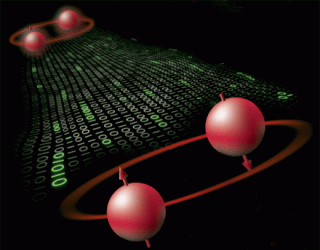Researchers observe Quantum Entanglement of a Single Particle

Quantum entanglement is a phenomenon that occurs when a pair of particles interacts in manners such that the quantum state of every particle cannot be described independently. According to reports, researchers have observed quantum entanglement of a single particle. This was the first time, when researchers succeeded in observing that. The new observation could prove Einstein wrong on the issue.
Before this, the event was believed to be impossible under the contemporary quantum mechanics definition of physical reality. According to theory, physical properties of two entangled particle correlate when they are examined. A clockwise spin on first particle will be equal to counterclockwise spin of second particle. Combined spin of both the particles will be zero. Taking measurement of an entangled particle could happen as an action upon it. This action could affect the other particle. The procedure makes it very difficult or impossible to find out whether the other particle's action was an outcome of entanglement.
These kinds of procedures happen with two entangled particles, but phenomenon quantum entanglement can also occur with a single particle. For example, a single particle of light can be split into two particles that are still connected. Wave function of the single particle spreads over large distances, but the particle can never be detected on more than one place.
Researchers from Griffiths University's Centre for Quantum Dynamics showed that single-particle quantum entanglement is possible. During the research, the researchers used homodyne detectors, which are instruments that can measure waves and wave-like properties. By using the instruments, Professor Howard Wiseman and his team demonstrated that this wave function collapse is a real effect.
The researchers split a single particle of light between two laboratories and tested whether the choice of measurement in one caused a change in the local quantum state in the other laboratory.
You May Also Like
- New proposed particle could help explain ‘dark matter’ mystery
- Quantum physics is simpler than previously thought: Study
- Discovery of Higgs boson and search for dark matter may be related
- Large Hadron Collider will be Switched Back This Year
- Large Hadron Collider to Restart in 2015, with Double Power this Time


